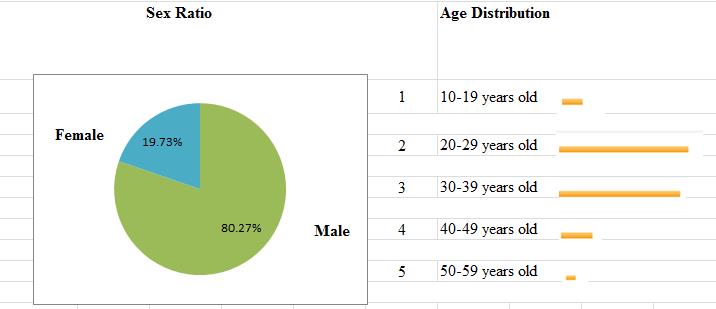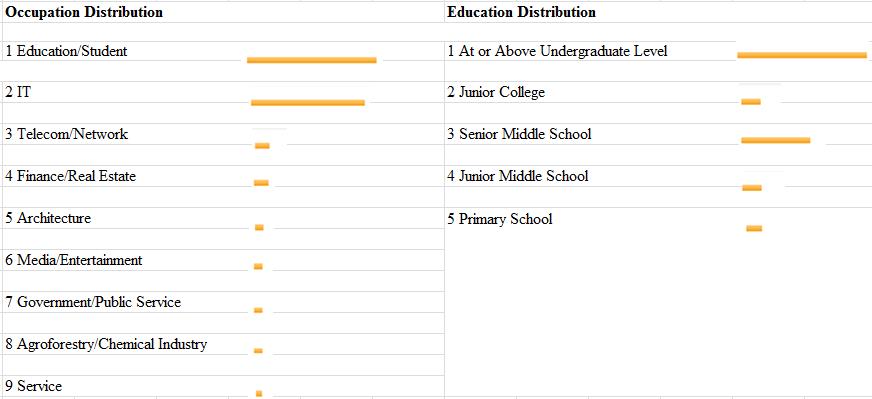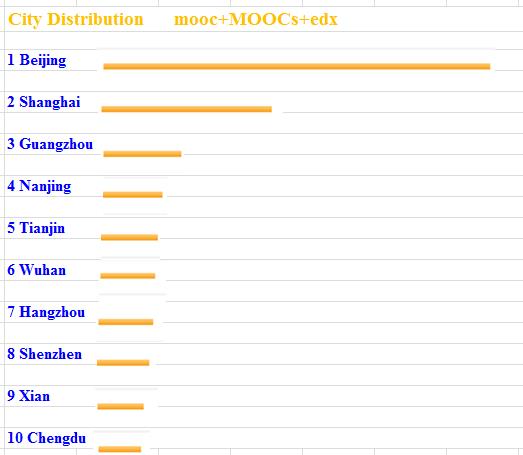2.4 Participation of Individual Users in experience of MOOCs
MOOCs has also aroused positive attention from individual users (learners). Chinese users (learners) of MOOCs are distributed as shown in figure 1. MOOC learners are predominated by males aged 20-39 engaged mainly in education and ICT industries, and most learners study in undergraduate programmes and above. 

Figure 1 Distribution of age, occupation, and academic level

Figure 2 “MOOC” Search Index Ranking By City
Figure 2 shows the search index ranking of “MOOC” related key words (including “MOOCs”, “edx”, “coursera”, and “Udacity”) by city. By this means, one can deduce the distribution of Chinese MOOC users. The top 5, in terms of geographic area, are: Beijing Municipality, and then the province of Guangdong, Shanghai Municipality, the provinces of Zhejiang and Jiangsu; and the top 5, in terms of cities, are: Beijing, Shanghai, Guangzhou, Nanjing, and Tianjin.
China’s mooc.guokr.com is a gathering place for 40,000 learners who are using MOOCs. They often participate in exchanges and discussions on various courses. The learners have a high level of enthusiasm for learning and actively participate. In addition to the online exchanges and discussions of the learners, they also organize offline parties for schoolmates. The performance and views of these MOOC users are representative to some degree, and they hope to continue to absorb knowledge, mostly to satisfy their own quest for enrichment. However, some MOOC learners have found out that the quality of MOOC courses can be quite varied.